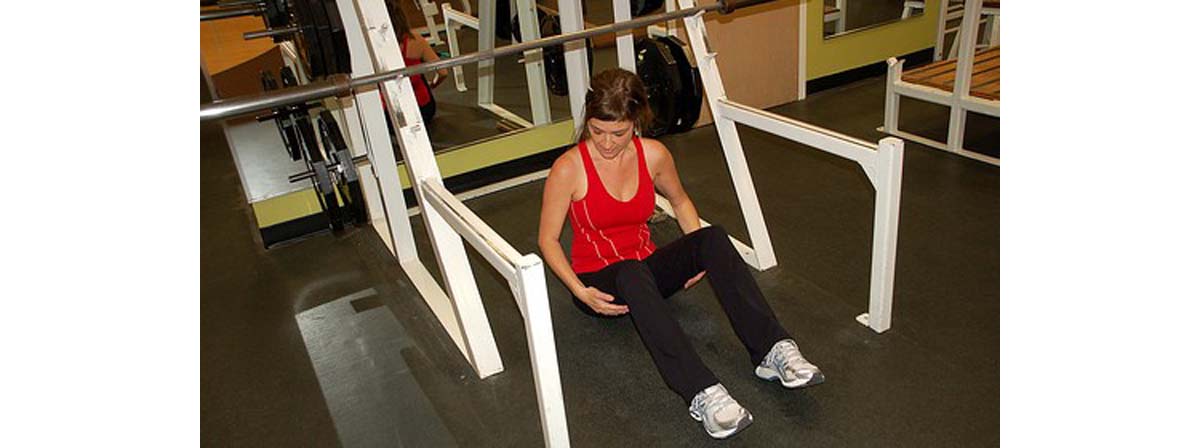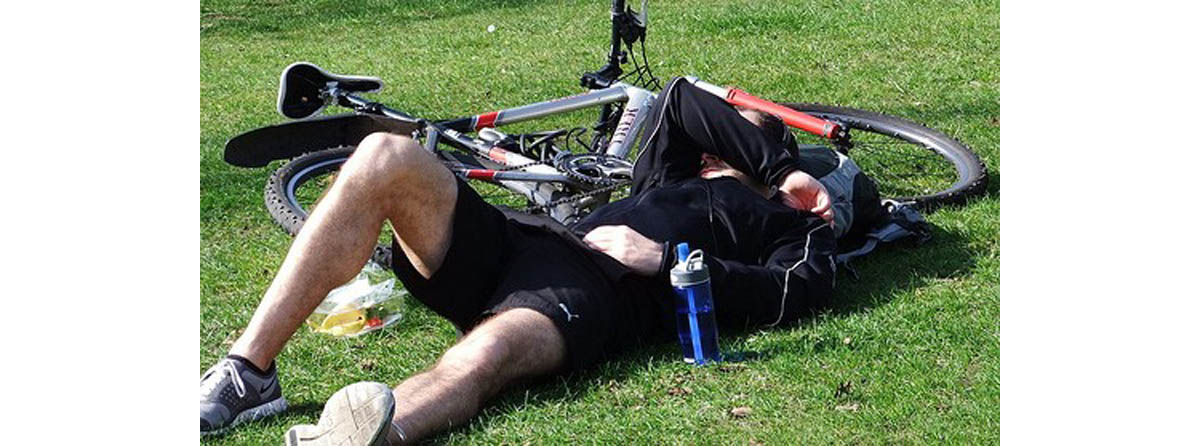Lifting weights breaks down muscle tissues. This may sound counterproductive, but it’s a process known as catabolism and is essential for muscle growth. When you break down muscle, you enter a catabolic state.

During your rest after your workout, both in the following hours and even for several days afterwards, your body works hard to repair this damage. Provided you rest enough, don’t train the area again until it’s recovered, and eat plenty of food, rich in calories, protein and carbohydrate, you’ll recover and grow bigger and stronger.
This rebuilding process is known as anabolism.
Trouble occurs however when you stay in this catabolic state for too long, or worse still, don’t come out of it at all.
Essentially, catabolism is a form of over training – you’re throwing too much at your body and not giving it adequate means to repair itself. While a degree of catabolism is necessary, your end goal should be to spend more time in an anabolic state than a catabolic one.
Catabolism can also occur during a prolonged period of not training. This probably doesn’t affect you too much though – you’ll maintain your muscle mass just fine for several weeks without training before you even have to consider muscle breakdown. Even a month long vacation is highly unlikely to have any negative impact on your gains.
Main Signs of Catabolism
A drop in progress is the number one telltale sign to watch out for. If you find you’re getting weaker, your poundages on lifts are dropping and you’re falling short of your required sets and reps, you’re probably going catabolic.
This moves in tune with muscle size too. This is difficult to assess from day to day, but if you’re keeping on top of your progress, taking regular physique photos or measurements of body parts like your thighs, chest, shoulders and arms, this gives a good indication of whether or not you’re going catabolic.
Feeling sore is another one. Everybody gets sore from time to time after a tough workout – it’s just part and parcel of lifting weights and training hard, but if you find you’re constantly hurting, feeling stiff and achy, you could be overdoing it and not recovering fully.
Finally, extreme fatigue and sleeplessness are key indicators of overtraining and catabolism. If you’re falling asleep at your desk or severely struggling for energy in the mornings, but finding that you can’t switch off when you hit the sheets, or spend hours each night staring at the ceiling, take a step back and address your catabolism issues.
Beating Your Catabolic State with a Few Easy Fixes
By the sounds of it, catabolism is pretty detrimental. It certainly can have huge impacts on your training, and definitely not in a good way. To put it simply, when you go catabolic, you can’t gain muscle – in fact, you lose it, likewise with strength. If you’re training for physique or performance goals, this is a huge problem.

Even if you’re just lifting weights to look and feel better and get healthier, catabolism is real bad news. As you can see, lack of sleep, soreness and fatigue are no good for anyone, so catabolism is to be avoided.
The first step is to recognize when you’re going catabolic.
This doesn’t mean jumping to conclusions every time your quads are hurting the day after squats, or your triceps start cramping during a tough set of dips – it means making detailed notes on how you feel after training sessions and on days in between. If you notice a pattern of soreness that doesn't seem to cease, catabolism may be the cause.
This is a key sign that you need to take a break. As mentioned, you can go catabolic from not training, but a week or two off won’t do you any harm whatsoever. In fact, it will be highly beneficial – better to take some down time now to avoid prolonged catabolism than having to take even longer off some point down the line.
If you can’t bear to take time off fully, just schedule a deload week. This involves lifting a little lighter – usually around 40 to 60 percent of your usual intensity, to give your muscles a chance to recover.
Eat
Catabolism occurs when you’re not giving your muscles, nervous system, and your body as a whole, enough fuel to recover.
The best cure for this? Food!
Eat five to six times per day and plenty of calories. Don’t worry about counting calories for a few weeks, or even fret over having the odd junk food meal, just eat to beat catabolism. This mans lots of protein and carbohydrate rich foods, fruits and vegetables, healthy fats from nuts, seeds, whole milk, red meat and peanut butter, plus the odd takeout, burger or serving of fries of you fancy.
Sleep
Hopefully by the time you implement the resting and eating strategies, your sleepless nights should have rectified themselves.
If you’re still struggling though, try some tactics to help you sleep.
Before going to bed, do a “brain dump.” This involves writing down everything that’s worrying or bothering you on a sheet of paper to get all the thoughts out of your head. This will help you de-stress.
Turning off your alarm will help too. Obviously this may be a little difficult Monday to Friday, but if you can sleep in, even for just an extra 30 minutes at the weekend, your body can use that sleeping time to recover. Never underestimate the benefits of a good night’s sleep.
Taking mini cat naps during the day is a fantastic idea also. If you can get just 10 to 20 minutes to yourself, find a quiet corner and catch a few zees.
Massage
A sports massage will loosen up aching muscles, flush blood through your body and push nutrients to fatigued tissues. Not only does massage help from a physiological standpoint, but mentally it will de-stress you and give you some “me time.”
Beating catabolism is pretty easy, provided you’re proactive and take control before it takes control of you.
- ”Fight Back to Build Mass” by Richard Choueri, Published September 10, 2010, Accessed on August 24th 2013, Retrieved from http://www.bodybuilding.com/fun/catabolic_crushers.htm
- Photo courtesy of Stephanie Young by Flickr : www.flickr.com/photos/justthismoment/5806190144/
- Photo courtesy of oatsy40 by Flickr : www.flickr.com/photos/oatsy40/6985216675/


Your thoughts on this